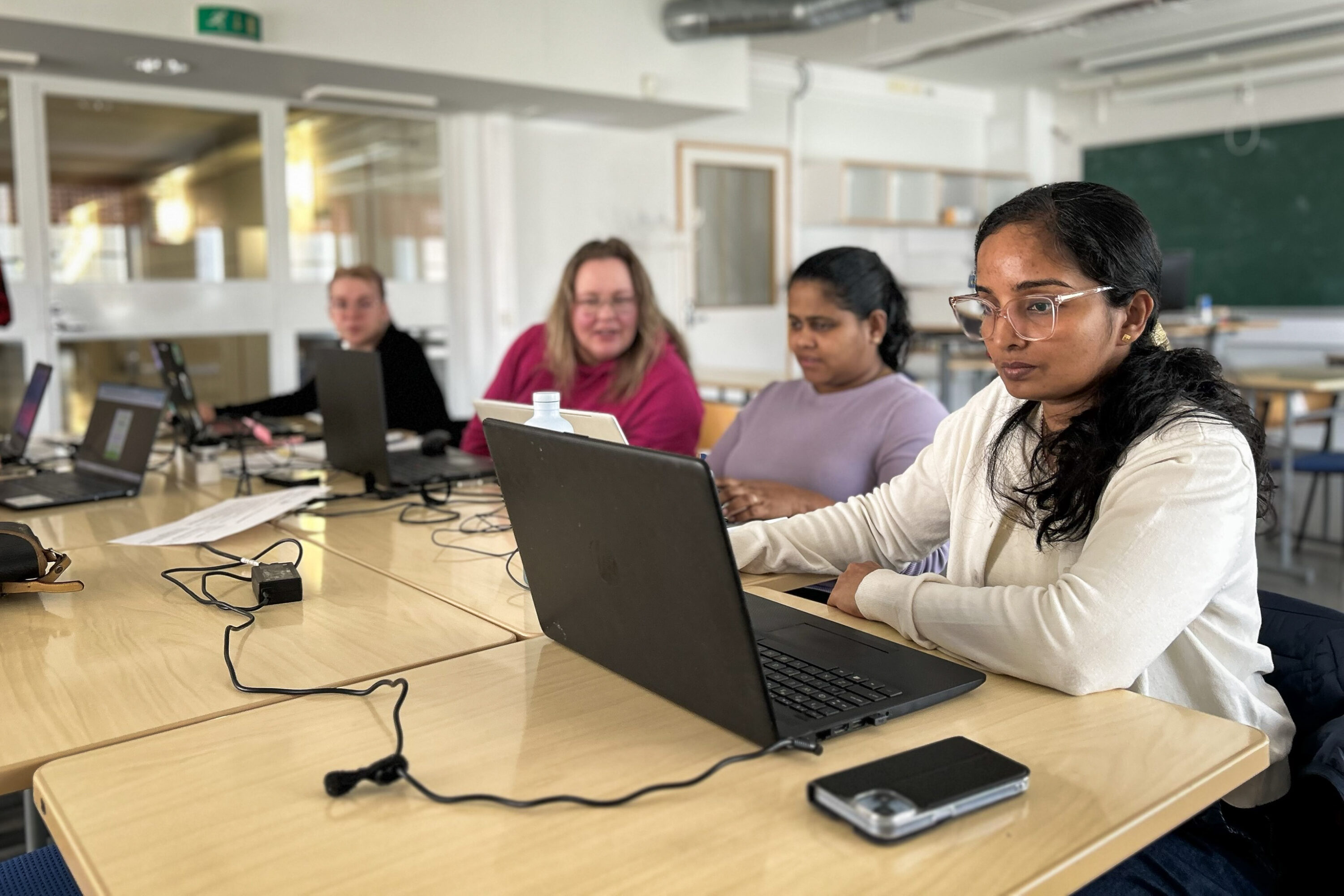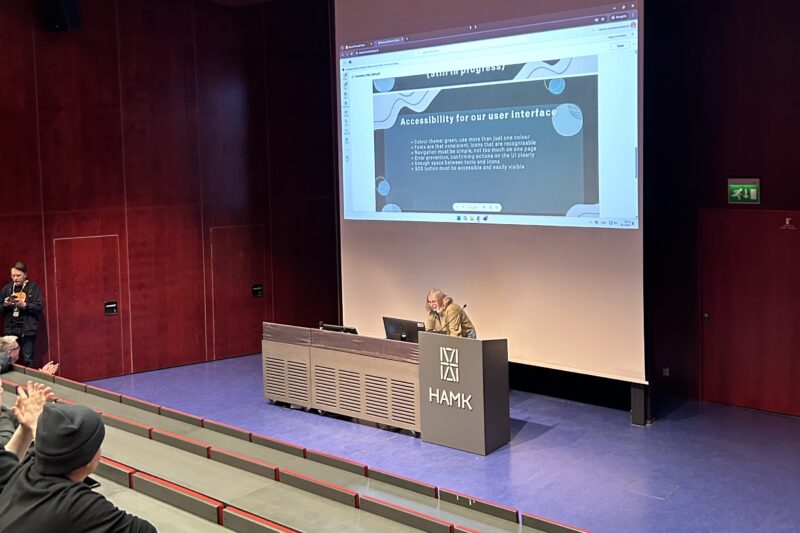Hackathon: Designing Accessible and Friendly User-Interface

HAMK’s multidisciplinary student teams dove into an innovative and collaborative learning experience and joined forces in our hackathon event: “Designing Accessible and Friendly User-Interface”. This event was a unique opportunity for students to engage in a real-world challenge, working alongside colleagues from different degree programmes to enhance their skills and make meaningful contributions to industry projects.
At HAMK, the Design-based Education (DBE) approach is becoming a more and more important part of studies. This educational philosophy connects students with the working world, allowing them to solve real company challenges and gain invaluable hands-on experience in multidisciplinary teams. Our hackathon was an example of a DBE project, where students from different degree programmes came together to tackle a common goal. This hackathon gathered students from our English-taught Computer Applications and ICT Circular Economy degree programmes as well as from Finnish-taught Business Information Technology (tietojenkäsittely) and ICT Circular Economy (tieto- ja viestintätekniikka, kiertotalous) degree programmes.
Gaining Practical Experience
ICT Circular Economy students have academic year-long IoT projects and as part of the User Interface Design and Usability Course, students have designed mobile apps and other types of user interfaces for different clients. For instance, students collaborated with Flip ry & Elker Oy on a project focused on LED lamp recycling. Another project was undertaken for the HAMK research’s KOTILO project and was related to consumer waste recycling. The starting point for the third assignment was the award-winning wearable eSports smart sleeve, innovated and implemented at HAMK research.
Computer Applications and Business IT student teams’ role was to audit the accessibility of the chosen prototypes made in Figma and provide development tips for improvement for the ICT Circular Economy students. Accessibility is crucial in user interface design because it ensures that digital products and services can be used by everyone, including individuals with disabilities. It promotes inclusiveness, broadens the user base, and often improves usability for all users, not just those with specific needs. HAMK Computer Applications and Business IT studies include accessibility studies where students learn, for example, how to apply the principles of accessibility & user experience in website design.

For students this kind of DBE project offers opportunities to enhance their multidisciplinary cooperation skills and meet new colleagues from different degree programmes. Also, in this hackathon students gained experience about accessibility and user interface process. According to the feedback, students were pleased with how the hackathon day was implemented. Also, for ICT Circular Economy students this was a nice chance to visit Hämeenlinna University Center since their studies are usually conducted in HAMK Forssa campus.
Design-based education (DBE)
Design-based education (DBE) is the starting point for learning and teaching at HAMK. DBE is a way of learning that is done in close collaboration with companies and other employers.
In DBE, the key is to develop together and learn working methods that students will need in their future careers. Students are always given real challenges from companies to solve, which provides an inspiring learning environment and brings the working life close already during their studies.